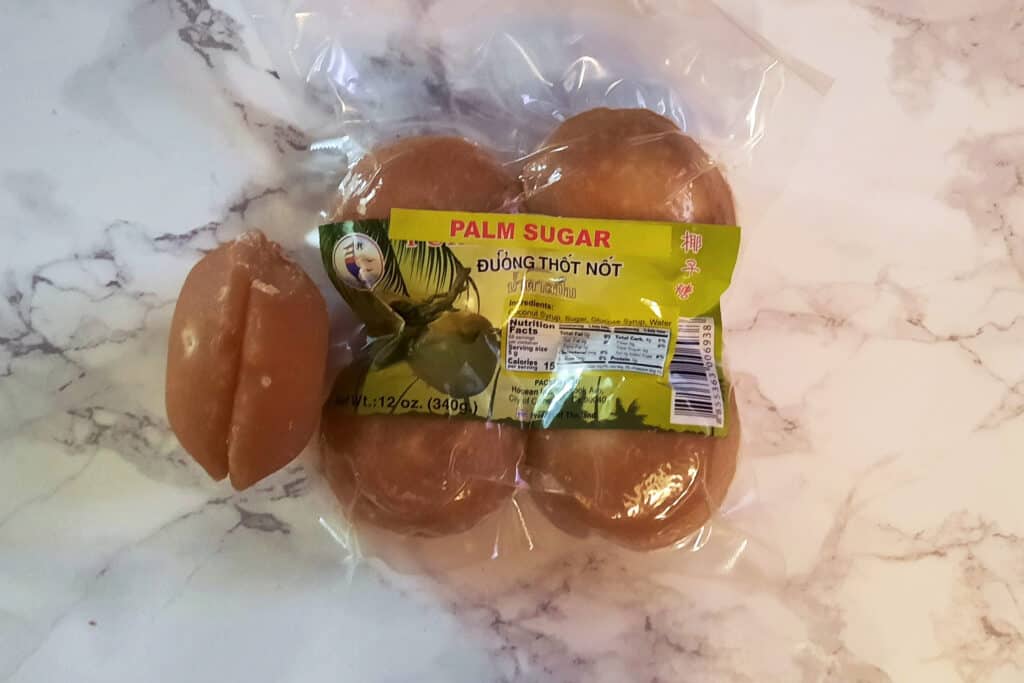Palm sugar is made by boiling sap from palm trees until it thickens and hardens. It has a rich
taste that is sort of comparable to brown sugar or caramel. It is a little less sweet than cane sugar. This sugar is frequently used in southeast Asian recipes. It is an item that you may be able to find at your supermarket or natural grocer although I typically buy mine at an Asian specialty store.
Palm sugar is one of the few things I haven’t tested extensively across brands. I found one I liked
and stuck with it. I prefer products that are hardened into half spheres. For my Restaurant-style Thai Curry recipe, I use two half spheres, melted into water. The rounds I use are a total of 3 oz apiece; of course you can use an equivalent amount of the granulated kind as well. I would still recommend melting it into the water, however. Sometimes palm sugar is also sold as a paste. This can be easier to manage than the hardened rounds, and may not be required to melt in water to use.

This type of sugar has a lower glycemic index rating than cane sugar, which makes it a healthier option for people avoiding those blood sugar spikes. It also tends to be less highly processed and refined. This means there is a greater presence of micronutrients such as potassium, zinc and iron.
You may see different palm sugars with different qualifiers in the title, for example “coconut palm sugar” or “date palm sugar”. These descriptors refer to the type of palm that the sugar was made from, in this case a coconut palm or a date palm. Although they may have somewhat different flavors, they can generally be used interchangeably in any recipe calling for this sugar. Coconut palm sugar is one of the most common types found at retailers in the United States.
